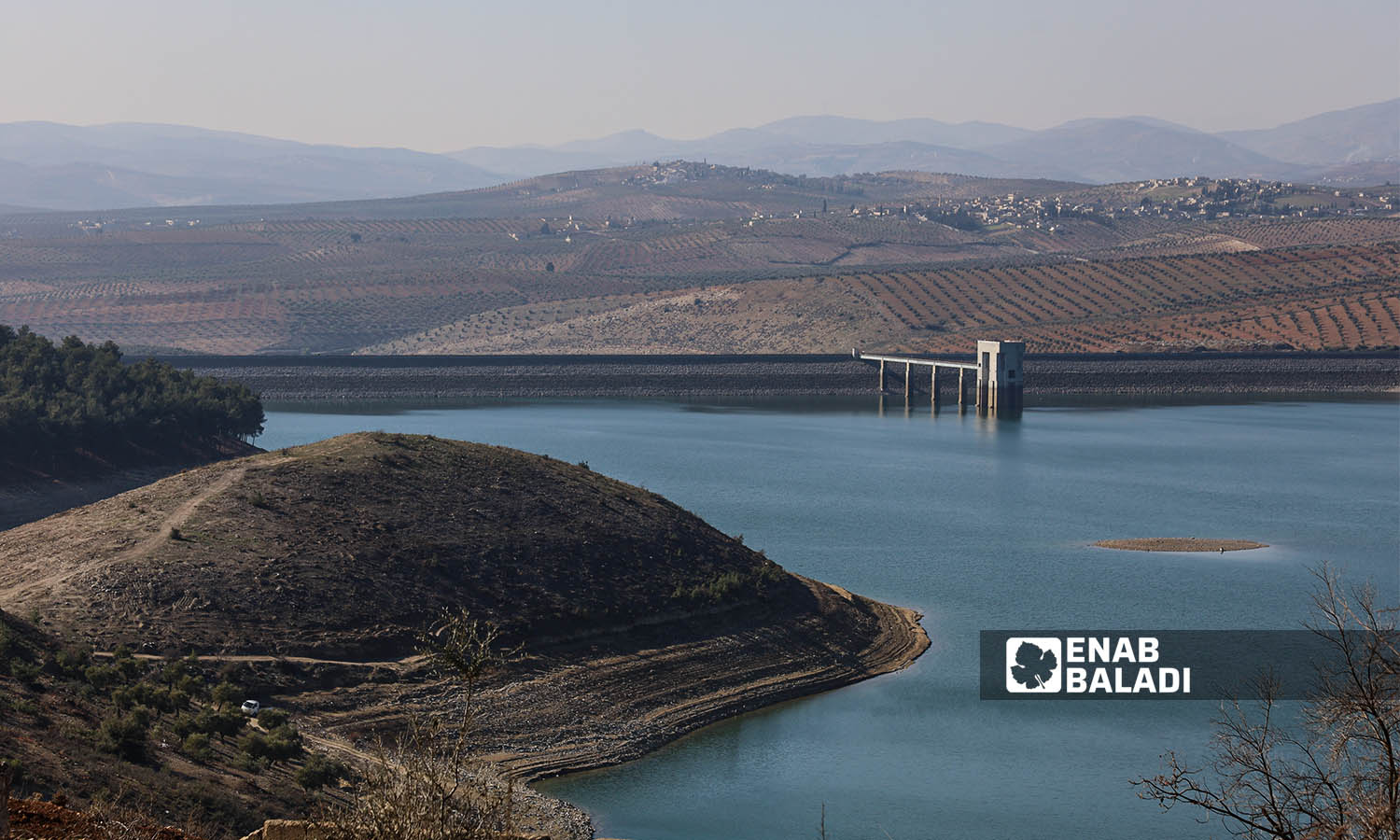



Enab Baladi – Afrin
The Maydanki dam in the northern city of Afrin was exposed to huge longitudinal and transverse cracks caused by the massive 7.7 magnitude earthquake that struck southeastern Turkey and northwestern Syria on February 6, leaving more than 35,000 people dead.
But while engineers from the region were reassured of the dam’s safety, these assurances were criticized for being based on theoretical criteria and did not rise to a thorough examination based on specialized engineering mechanisms amid local warnings of the danger of not restoring the dam as soon as possible.
The circulating photos and footage showed large cracks occurred in the dam in the northern countryside of Aleppo governorate.
Adnan al-Mubayed, an engineer specializing in seismology, told Enab Baladi that facilities, in general, are designed according to their importance and severity in the event of earthquakes, according to technical conditions, so that the larger the building (its floors increase), the more its construction conditions increase, depending on the number of its expected residents.
The dam is considered one of the most dangerous installations after the nuclear facilities with regard to earthquakes, which must be designed based on very large safety factors to resist earthquakes in their strongest degrees up to 9 on the Richter scale, according to the engineer.
Dams have many types, the most prominent of which are concrete dams and embankment dams.
The concrete dam is a reinforced concrete with small and specific thicknesses, its resistance is limited, but its cost is very high, which makes the embankment dam an alternative to it, which is based on an impermeable clay core that forms the basis for the water retention process to ensure that it does not leak.
In the case of the embankment (rubble) dam type, the backfilling process is added with selected and calculated stones in terms of gradation and hardness, after which the cladding stage is completed.
Based on these specifications, al-Moubayed assures that this dam here can resist earthquakes up to 9 magnitudes.
The Maydanki dam has suffered during the past ten years from neglect of maintenance for everything necessary to maintain it, which led to a decrease in its life span and its safety factor.
The longitudinal and transverse cracks in the dam body also resulted from the lack of permanent technical monitoring of this dam for a long time.
The engineer explained that the danger lies in the cracks caused by the water within these cracks, as it is possible for the water to leak, which in turn may lead to the expansion of the cracks and generate additional cracks, which may cause a collapse in the dam due to the entry of water into the body of the dam.
One day after the body of the dam was affected by the earthquake, the Free Syrian Engineers Syndicate in Aleppo said that a group of consultants and experienced engineers visited the Maydanki area in the countryside of Aleppo to assess the earthquake’s damage to the Maydanki dam.
Jassem al-Safira, director of the engineering office in Afrin city, told Enab Baladi that the technical visit, which also included engineers who were supervising the dam before the earthquake, concluded that “the dam is safe.”
The experts who conducted the technical visit will issue an extensive report on the condition of the dam, including an assessment of the condition and recommendations for proposed solutions to deal with the damage.
Engineer Ahmed Warda, who was among the experts team and one of the principals supervising the work of the dam before the earthquake, told Enab Baladi that to assess the damage, the experts first looked at the tunnel passing through the axis of the dam.
In the case of the earthquake that struck the area, the movement of the dam axis indicates damages represented in the presence of leakage, which was not noticed.
Warda added that the water well was also checked in the intake gates at a depth below the lake, and no change was recorded from the previous condition.
Regarding the standards that were relied upon to assess the size and nature of the damage during the visit, Eng. Warda assured that they were “theoretical” standards by engineering experts without careful examination by specialized devices due to their unavailability.
He pointed out that the evaluation by these devices would certainly have given greater accuracy in the evaluation.
The damage was represented by cracks in the road passing the top of the dam, which is a normal problem because it is an asphalt road that can be treated simply, indicating that this road was previously exposed to cracks that were treated, according to the engineer.
Warda denied the existence of any danger in the dam or that it could be “collapsible,” as activists speculated because it was originally designed to withstand the seismic intensity that struck the region.
Eng. al-Moubayed, who specializes in seismology, considered that the examination of the dam is “superficial” unless any monitoring devices or sonar are used for the dam’s body and core.
Damage assessment here requires special equipment to examine huge dams and sensors, according to the engineer, adding that such results cannot be adopted quickly, and it also requires plans, special investigations, and in-depth study.
The Maydanki dam, also known as the Afrin dam or “April 17” dam, is located 70 kilometers from Aleppo and 12 kilometers from the town of Afrin, near the village of Maydanki, which overlooks the Afrin River.
The catchment area is 527 m2, and the annual precipitation ranges from 330 to 700 millimeters.
The Afrin River originates from the south of the Kartal Mountains in Turkey and crosses into Syria, where it passes through the city of Afrin and then returns to Turkey, the Iskenderun area.
if you think the article contain wrong information or you have additional details Send Correction